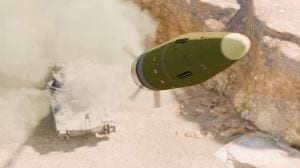NASA may send fleet of spacecraft to Venus
NASA may send a fleet of spacecraft to Venus after a planned mission to Jupiter and its moons set for launch in 2020,the US space agency has said.
NASA may send a fleet of spacecraft to Venus after a planned mission to Jupiter and its moons set for launch in 2020,the US space agency has said.
According to NASA,the USD 4-billion Venus mission,to be launched between 2020 and 2025,could reveal more about the planet’s runaway greenhouse effect,any oceans it may have had,and the volcanic activity,the ‘New Scientist’ reported.
Two high-altitude balloons built to hover in sulphuric acid clouds could also be part of the fleet to Venus which has more in common with Earth than any other in terms of distance from the Sun,size and mass,the US space agency has said.
And,the mission’s two balloons would each carry a gondola full of scientific instruments to sniff the atmosphere at an altitude of 55 kilometres.
In fact,in 2008,NASA tasked a group of scientists to formulate goals for the mission. The team’s study outlines a plan to study the planet and the mission concept includes one orbiter,two balloons and two short-lived landers,all of which would launch into space on two Atlas V rockets.
Our understanding of Venus is so low,we really need this armada, team leader Mark Bullock of Southwest Research Institute in Colorado was quoted as saying.
According to NASA,as an ensemble,the spacecraft could help reveal what happened to Venus’s oceans as the team believes water was once plentiful enough to have been able to cover the entire planet in a layer 100 metres deep.
But Venus’s hothouse climate eventually dried up most of the water,a process which might have slowed and eventually stopped plate tectonics on the planet.
Since such hydrated minerals have a limited lifetime,they could help reveal how long Venus’s oceans might have lasted,a question that could shed light on whether life might have arisen on the planet,according to the team.
Because it’s such a challenging mission,we are going to recommend NASA begin investing in the required technology right away, Bullock said.





- 01
- 02
- 03
- 04
- 05


























